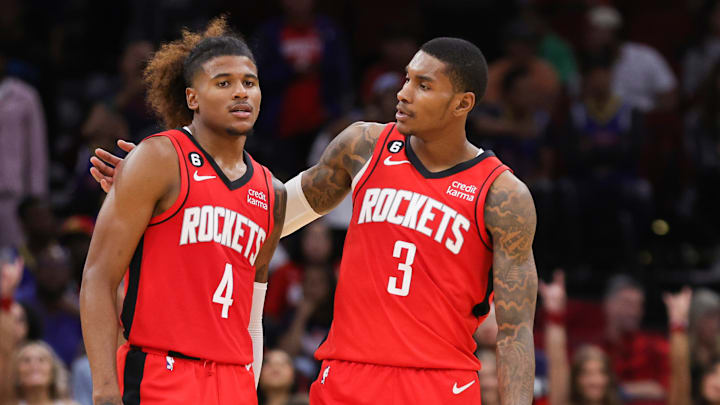The Houston Rockets have endured a slow start to the season. After losing to the Utah Jazz on Wednesday, their record slumped to 1-4. However, racking up losses shouldn’t come as a surprise for the youngest team in the league.
Instead of worrying about their record, it would be wise to monitor on-court developments. In this post, we’ll look at the Rockets’ offense compared to last season to see if there has been growth, stagnation, or regression.
Looking at the 2021-22 Houston Rockets offense
Thanks to the work of Nylon Calculus, we have a good idea of how the Rockets’ offense operated in 2021-22. Based on ball movement, player movement, shot selection, and pace, the Rockets had an offense style dubbed “run and spot-up,” as defined by Nylon Calculus. The only other team with a similar offense was the Los Angeles Lakers.
The Houston Rockets Offensive Style in 2021-22 per the work of @NylonCalculus pic.twitter.com/VULhFeALED
— N.B. Lindberg (@nblindberg) October 28, 2022
This is how the type of attack looks in action: “This style is categorized by an up-tempo attack and a fairly efficient shot selection with lots of 3-pointers. However, once the offense gets out of transition the halfcourt offense tends to be fairly static with a primary creator attacking the basket, surrounded by spot-up shooters,” according to Ian Levy.
This offense sounds great but there is one big difference between last season’s Lakers and Rockets. The Lakers had LeBron "freaking" James, and the Rockets had rookie Jalen Green and “maybe a point guard, maybe not” in Kevin Porter Jr. Any offense that looks like a LeBron-led offense needs to have a LeBron-like talent orchestrating it.
It was painfully obvious that the Rockets’ offense needed to adapt. Levy perfectly summed up the next logical steps for the Rockets’ offense going forward, “It might be wise to expect some evolution from the Rockets. If Alperen Sengun’s playmaking responsibilities increase, they have the foundation of a much more dynamic halfcourt offense that could benefit from a lot more movement. Or, they could all just stand around and watch Jalen Green work.”
How novel of a suggestion to build an offense around the strengths of your two best young offensive players. So how has that played out this season?
